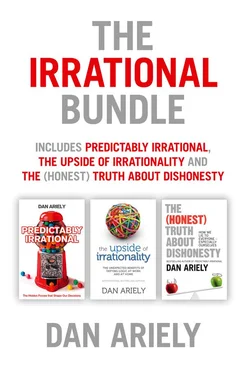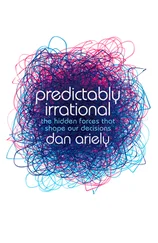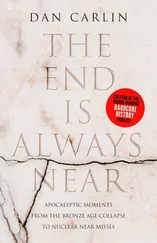Dan Ariely - The Irrational Bundle
Здесь есть возможность читать онлайн «Dan Ariely - The Irrational Bundle» — ознакомительный отрывок электронной книги совершенно бесплатно, а после прочтения отрывка купить полную версию. В некоторых случаях можно слушать аудио, скачать через торрент в формате fb2 и присутствует краткое содержание. Жанр: unrecognised, на английском языке. Описание произведения, (предисловие) а так же отзывы посетителей доступны на портале библиотеки ЛибКат.
- Название:The Irrational Bundle
- Автор:
- Жанр:
- Год:неизвестен
- ISBN:нет данных
- Рейтинг книги:3 / 5. Голосов: 1
-
Избранное:Добавить в избранное
- Отзывы:
-
Ваша оценка:
- 60
- 1
- 2
- 3
- 4
- 5
The Irrational Bundle: краткое содержание, описание и аннотация
Предлагаем к чтению аннотацию, описание, краткое содержание или предисловие (зависит от того, что написал сам автор книги «The Irrational Bundle»). Если вы не нашли необходимую информацию о книге — напишите в комментариях, мы постараемся отыскать её.
The Irrational Bundle — читать онлайн ознакомительный отрывок
Ниже представлен текст книги, разбитый по страницам. Система сохранения места последней прочитанной страницы, позволяет с удобством читать онлайн бесплатно книгу «The Irrational Bundle», без необходимости каждый раз заново искать на чём Вы остановились. Поставьте закладку, и сможете в любой момент перейти на страницу, на которой закончили чтение.
Интервал:
Закладка:
Here’s what happened. Instead of offering FREE! shipping on orders over a certain amount, the French division priced the shipping for those orders at one franc. Just one franc—about 20 cents. This doesn’t seem very different from FREE! but it was. In fact, when Amazon changed the promotion in France to include free shipping, France joined all the other countries in a dramatic sales increase. In other words, whereas shipping for one franc—a real bargain—was virtually ignored by the French, FREE! shipping caused an enthusiastic response.
America Online (AOL) had a similar experience several years ago when it switched from pay-per-hour service to a monthly payment schedule (in which you could log in as many hours as you wanted for a fixed $19.95 per month). In preparation for the new price structure, AOL geared up for what it estimated would be a small increase in demand. What did it get? An overnight increase from 140,000 to 236,000 customers logging into the system, and a doubling of the average time online. That may seem good—but it wasn’t good. AOL’s customers encountered busy phone lines, and soon AOL was forced to lease services from other online providers (who were only too happy to sell bandwidth to AOL—at the premium of snow shovels in a snowstorm). What Bob Pittman (the president of AOL at the time) didn’t realize was that consumers would respond to the allure of FREE! like starving people at a buffet.
WHEN CHOOSING BETWEEN two products, then, we often overreact to the free one. We might opt for a FREE! checking account (with no benefits attached) rather than one that costs five dollars a month. But if the five-dollar checking account includes free traveler’s checks, online billing, etc., and the FREE! one doesn’t, we may end up spending more for this package of services with the FREE! account than with the five-dollar account. Similarly, we might choose a mortgage with no closing costs, but with interest rates and fees that are off the wall; and we might get a product we don’t really want simply because it comes with a free gift.
My most recent personal encounter with this involved a car. When I was looking for a new car a few years ago, I knew that I really should buy a minivan. In fact, I had read up on Honda minivans and knew all about them. But then an Audi caught my eye, at first through an appealing offer—FREE! oil changes for the next three years. How could I resist?
To be perfectly honest, the Audi was sporty and red, and I was still resisting the idea of being a mature and responsible father to two young kids. It wasn’t as if the free oil change completely swayed me, but its influence on me was, from a rational perspective, unjustifiably large. Just because it was FREE! it served as an additional allure that I could cling to.
So I bought the Audi—and the FREE! oil. (A few months later, while I was driving on a highway, the transmission broke—but that is a different story.) Of course, with a cooler head I might have made a more rational calculation. I drive about 7,000 miles a year; the oil needs to be changed every 10,000 miles; and the cost per change is about $75. Over three years, then, I would save about $150, or about 0.5 percent of the purchase price of the car—not a good reason to base my decision on. It gets worse, though: now I have an Audi that is packed to the ceiling with action figures, a stroller, a bike, and other kids’ paraphernalia. Oh, for a minivan.
THE CONCEPT OF zero also applies to time. Time spent on one activity, after all, is time taken away from another. So if we spend 45 minutes in a line waiting for our turn to get a FREE! taste of ice cream, or if we spend half an hour filling out a long form for a tiny rebate, there is something else that we are not doing with our time.
My favorite personal example is free-entrance day at a museum. Despite the fact that most museums are not very expensive, I find it much more appealing to satisfy my desire for art when the price is zero. Of course I am not alone in this desire. So on these days I usually find that the museum is overcrowded, the line is long, it is hard to see anything, and fighting the crowds around the museum and in the cafeteria is unpleasant. Do I realize that it is a mistake to go to a museum when it is free? You bet I do—but I go nevertheless.
ZERO MAY ALSO affect food purchases. Food manufacturers have to convey all kinds of information on the side of the box. They have to tell us about the calories, fat content, fiber, etc. Is it possible that the same attraction we have to zero price could also apply to zero calories, zero trans fats, zero carbs, etc.? If the same general rules apply, Pepsi will sell more cans if the label says “zero calories” than if it says “one calorie.”
Suppose you are at a bar, enjoying a conversation with some friends. With one brand you get a calorie-free beer, and with another you get a three-calorie beer. Which brand will make you feel that you are drinking a really light beer? Even though the difference between the two beers is negligible, the zero-calorie beer will increase the feeling that you’re doing the right thing, healthwise. You might even feel so good that you go ahead and order a plate of fries.
SO YOU CAN maintain the status quo with a 20-cent fee (as in the case of Amazon’s shipping in France), or you can start a stampede by offering something FREE! Think how powerful that idea is! Zero is not just another discount. Zero is a different place. The difference between two cents and one cent is small. But the difference between one cent and zero is huge!
If you are in business, and understand that, you can do some marvelous things. Want to draw a crowd? Make something FREE! Want to sell more products? Make part of the purchase FREE!
Similarly, we can use FREE! to drive social policy. Want people to drive electric cars? Don’t just lower the registration and inspection fees—eliminate them, so that you have created FREE! In the same way, if health is your concern, focus on early detection as a way to eliminate the progression of severe illnesses. Want people to do the right thing—in terms of getting regular colonoscopies, mammograms, cholesterol checks, diabetes checks, and such? Don’t just decrease the cost (by decreasing the co-pay). Make these critical procedures FREE!
I don’t think most policy strategists realize that FREE! is an ace in their hand, let alone know how to play it. It’s certainly counterintuitive, in these times of budget cutbacks, to make something FREE! But when we stop to think about it, FREE! can have a great deal of power, and it makes a lot of sense.
Reflections on the Price of FREE!
We learned from our experiments that we all get a bit too excited when something is FREE! and that consequently, we can make decisions that are not in our best interest.
For example, imagine that you were choosing between two credit cards: one that offers you a 12 percent APR but has no yearly fee (FREE!), and one that offers you a lower interest rate of 9 percent APR but charges you a $100 annual fee. Which one would you take? Most people would overemphasize the yearly fee and in pursuit of the FREE! offer would end up getting the card that costs them much more in the long run—when they inevitably miss a payment or carry a balance. * Конец ознакомительного фрагмента. Текст предоставлен ООО «ЛитРес». Прочитайте эту книгу целиком, купив полную легальную версию на ЛитРес. Безопасно оплатить книгу можно банковской картой Visa, MasterCard, Maestro, со счета мобильного телефона, с платежного терминала, в салоне МТС или Связной, через PayPal, WebMoney, Яндекс.Деньги, QIWI Кошелек, бонусными картами или другим удобным Вам способом.
Интервал:
Закладка:
Похожие книги на «The Irrational Bundle»
Представляем Вашему вниманию похожие книги на «The Irrational Bundle» списком для выбора. Мы отобрали схожую по названию и смыслу литературу в надежде предоставить читателям больше вариантов отыскать новые, интересные, ещё непрочитанные произведения.
Обсуждение, отзывы о книге «The Irrational Bundle» и просто собственные мнения читателей. Оставьте ваши комментарии, напишите, что Вы думаете о произведении, его смысле или главных героях. Укажите что конкретно понравилось, а что нет, и почему Вы так считаете.












